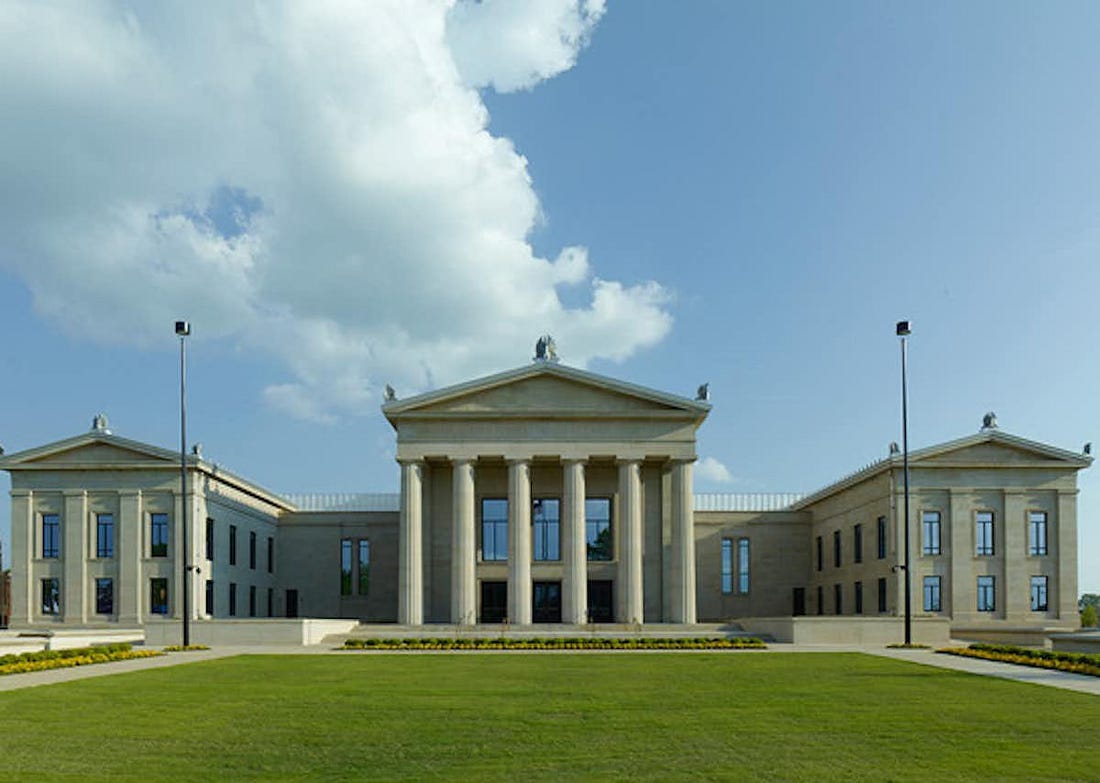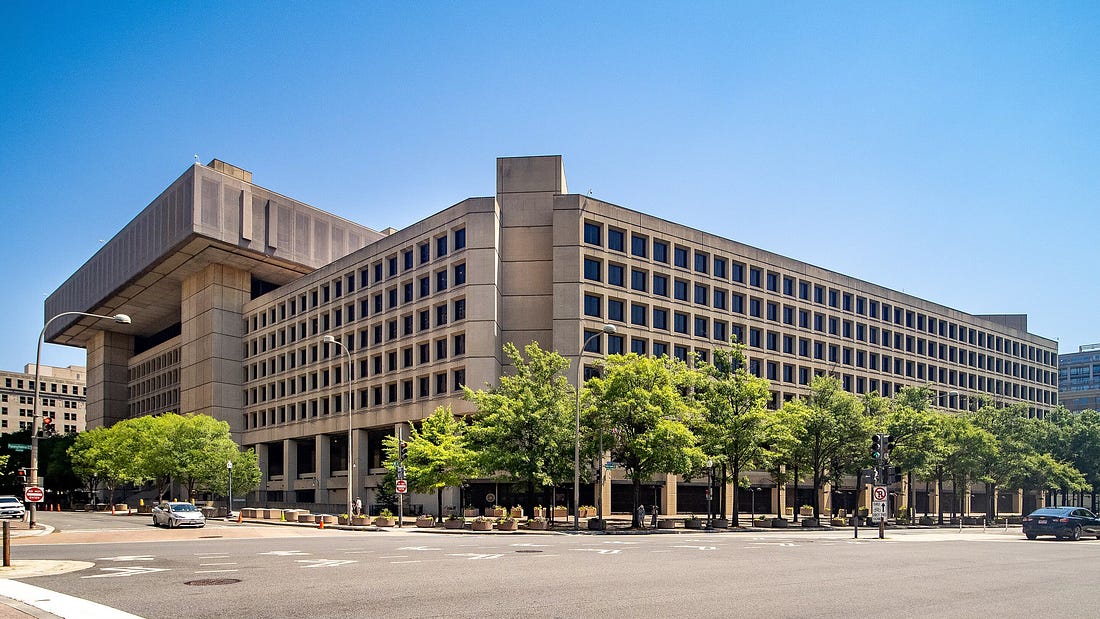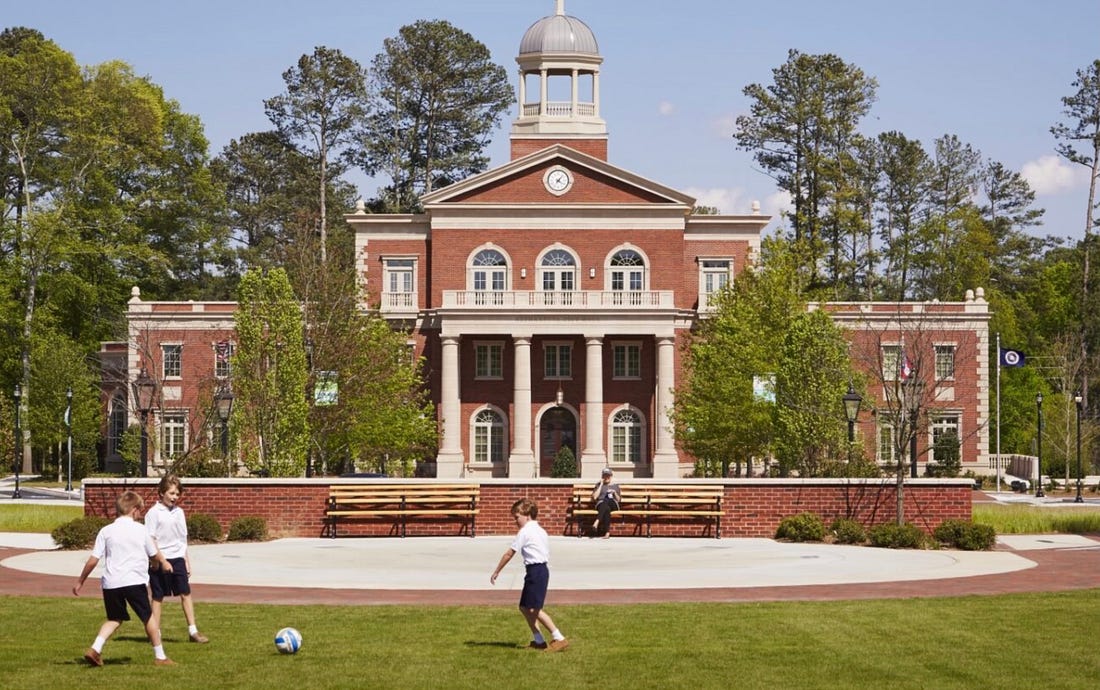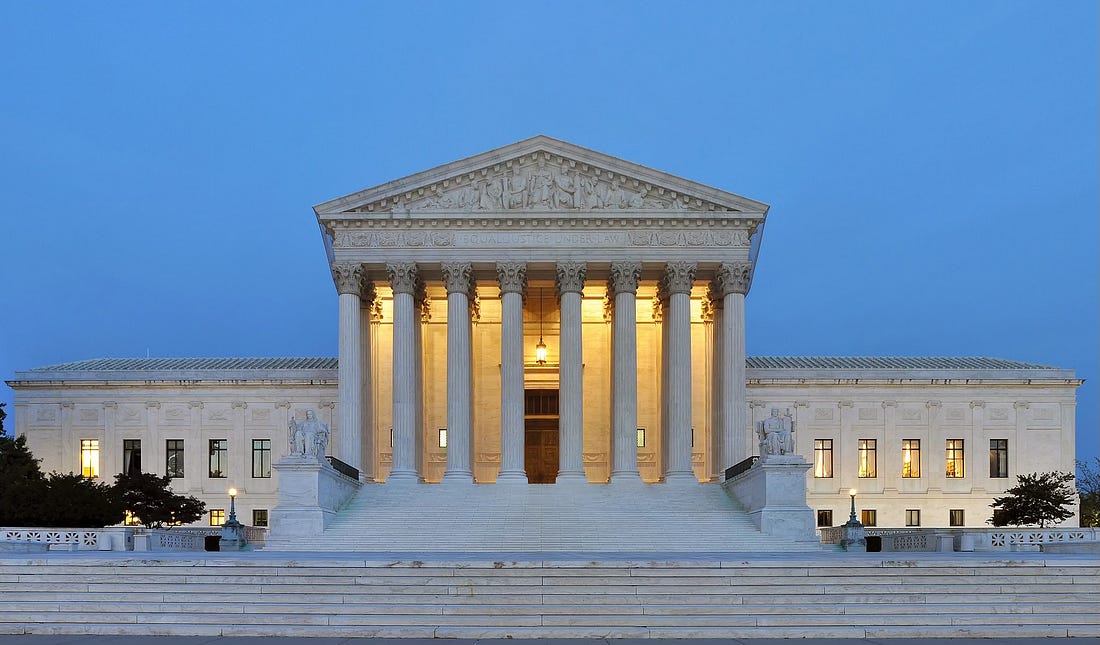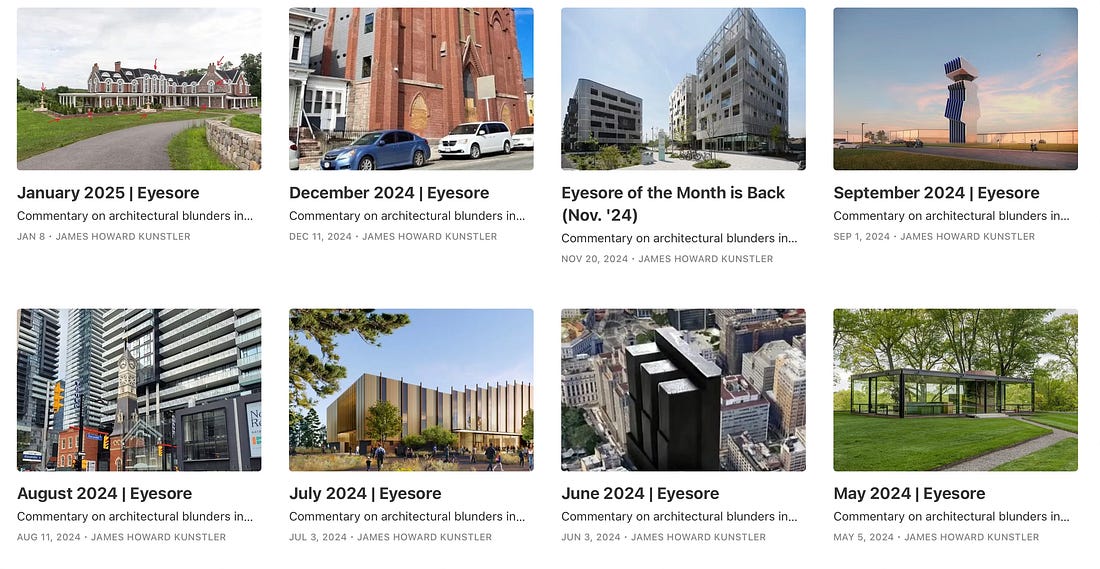
February 2025 | Eyesore
|
Concerning President Donald Trump’s executive order requiring new federal buildings to show a preference for “classical architectural style” which includes Neoclassical, Georgian, Federal, Greek Revival, Beaux-Arts, and Art Deco, referencing the architectural traditions of Greek and Roman antiquity. . . Behold (above) the federal building and courthouse in Tuscaloosa, Alabama by HBRA Architects. And, no, it was not conceived when Andy Jackson was fighting the Battle of Emuckfaw against the “Red Stick” Creek Indians in 1814. Rather, it went up in 2012, a rare example of neoclassical design executed in our time. For the most part, though, the decades-long trend in American civic architecture has been for sui generis one-off, tortured-genius, para-metaphysical, high-tech, in-your-grille stunt buildings commissioned to shock and confound the middle class (Épater le bourgeois, as the French dubbed this maneuver). These generally horrified the public (as intended), as well as perplexing and confusing them, making their interaction with the building a form of punishment. Often it was difficult to even discern where the entrance of the building was, or where to go once you managed to get inside. For instance, the recent San Francisco Federal building by Tom Mayne of Morphosis Architects, below, designed in the style of a dashboard from an alien spacecraft: At its worst, you got the conjunction of malign form and evil function, as concretized in Washington’s J. Edgar Hoover Building, home office (mother ship) of the FBI, below: Kind of looks like a giant stroopwafel jammed under a coffee table. You can be sure that little good came out of it, especially the past four years, and probably the whole six decades of its miserable existence. FBI-Director nominee Kash Patel went so far as to propose it be turned into “a Museum of the Deep State.” Well, yes. Perfect! Below, see another new-ish civic structure dressed in neo-Georgian formality: the Alpharetta, GA, City Hall by David M. Schwartz architects — granted, not a federal building, but proof that trad proportions and details can be done well, where there’s a will to get’er done. Nice, huh. Dignified. Serene, confident, legible. . . reflecting what is to be desired in a polity, sanity and grace. Why trad design, you might ask? Initially, with our nation’s founding, there was a wish to express our national ethos in architecture that denoted the democratic spirit of Ancient Greece melded with the order of the early Roman republic. And so, you got this bold neoclassicism for over a hundred years, climaxing in the US Supreme Court’s headquarters, completed in 1935, below: There are hidden charms in this neoclassicism. You may notice that the building is organized with a base, a middle and a top (or capitol). Indeed, not just the whole, but its parts ( e.g., the columns) express this tripartite organization. This expresses the organization of the human body, with feet and legs, a trunk, and a head. Thus, it reflects our essential humanness back at us and confers dignity in the works of man and mankind itself. Sure there are other ways of making buildings, but are they expressing what we want to say about ourselves? Might we want to suggest that there is a sacred order to the human project, and be reminded of it forcefully in our monumental buildings? This blog is sponsored this week by Vaulted, an online mobile web app for investing in allocated and deliverable physical gold. To learn more visit: Vaulted.com Eyesore of the Month Since 1998For the first time ever, you can now binge-read and comment on the complete “Eyesore of the Month” archive going all the way back to this feature’s debut in March 1998. That’s more than 300 architectural blunders, abortions and abominations to make you chortle, snort and guffaw. Click here to read them all. |
